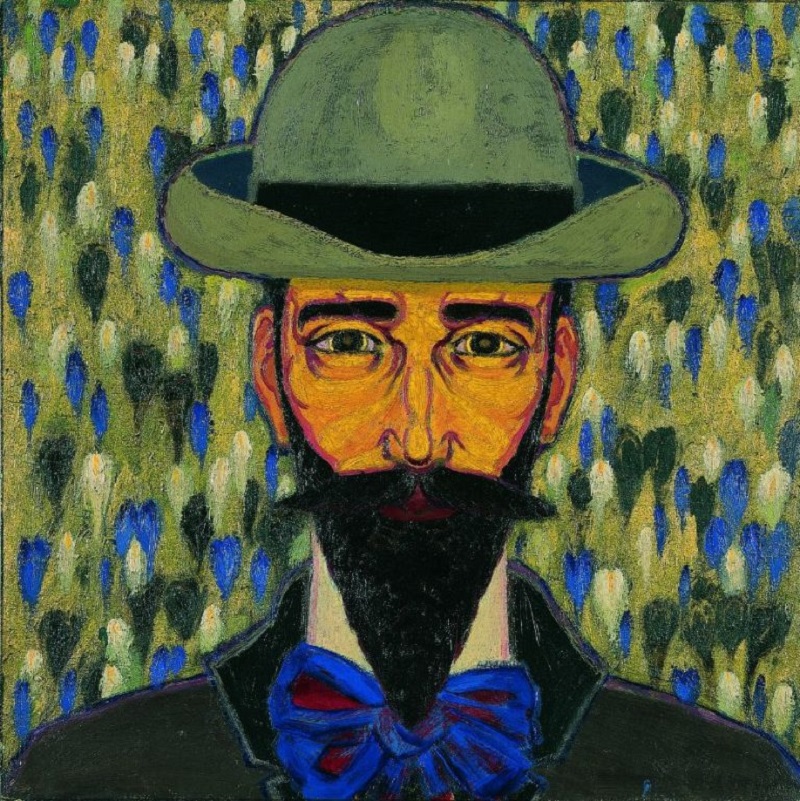андре эвар (1876 - 1972)

André Evard was a Swiss painter and drafter. His special significance lies in the field of constructive art. He is counted among the first artists who did not work figuratively. In the course of his life he produced hundreds of oil paintings, a large number of drawings as well as approximately 2000 to 3000 watercolor and gouache paintings.
André Evard's work is difficult to classify in the categories of art history. He was not committed to any particular style, but rather reverted to the past, mixed styles and invented something new. Art Nouveau, Cubism, and geometric-constructive abstractions all define his work. While in Paris he was part of the avant-garde, he later repeatedly withdrew to representational painting.
On the one hand, the play of forms and colors leads to highly expressive representational landscapes, on the other hand, fascinating still lifes emerge from the clear reduction, which show unusual color combinations and completely new object-space relationships. In doing so, he always exposed himself to the risk of a stylistic break, which, however, is the special feature of his artistic oeuvre. He painted abstract when hardly anyone painted abstract and returned to representational painting when Abstract art dominated.


André Evard was a Swiss painter and drafter. His special significance lies in the field of constructive art. He is counted among the first artists who did not work figuratively. In the course of his life he produced hundreds of oil paintings, a large number of drawings as well as approximately 2000 to 3000 watercolor and gouache paintings.
André Evard's work is difficult to classify in the categories of art history. He was not committed to any particular style, but rather reverted to the past, mixed styles and invented something new. Art Nouveau, Cubism, and geometric-constructive abstractions all define his work. While in Paris he was part of the avant-garde, he later repeatedly withdrew to representational painting.
On the one hand, the play of forms and colors leads to highly expressive representational landscapes, on the other hand, fascinating still lifes emerge from the clear reduction, which show unusual color combinations and completely new object-space relationships. In doing so, he always exposed himself to the risk of a stylistic break, which, however, is the special feature of his artistic oeuvre. He painted abstract when hardly anyone painted abstract and returned to representational painting when Abstract art dominated.


André Evard was a Swiss painter and drafter. His special significance lies in the field of constructive art. He is counted among the first artists who did not work figuratively. In the course of his life he produced hundreds of oil paintings, a large number of drawings as well as approximately 2000 to 3000 watercolor and gouache paintings.
André Evard's work is difficult to classify in the categories of art history. He was not committed to any particular style, but rather reverted to the past, mixed styles and invented something new. Art Nouveau, Cubism, and geometric-constructive abstractions all define his work. While in Paris he was part of the avant-garde, he later repeatedly withdrew to representational painting.
On the one hand, the play of forms and colors leads to highly expressive representational landscapes, on the other hand, fascinating still lifes emerge from the clear reduction, which show unusual color combinations and completely new object-space relationships. In doing so, he always exposed himself to the risk of a stylistic break, which, however, is the special feature of his artistic oeuvre. He painted abstract when hardly anyone painted abstract and returned to representational painting when Abstract art dominated.


André Evard was a Swiss painter and drafter. His special significance lies in the field of constructive art. He is counted among the first artists who did not work figuratively. In the course of his life he produced hundreds of oil paintings, a large number of drawings as well as approximately 2000 to 3000 watercolor and gouache paintings.
André Evard's work is difficult to classify in the categories of art history. He was not committed to any particular style, but rather reverted to the past, mixed styles and invented something new. Art Nouveau, Cubism, and geometric-constructive abstractions all define his work. While in Paris he was part of the avant-garde, he later repeatedly withdrew to representational painting.
On the one hand, the play of forms and colors leads to highly expressive representational landscapes, on the other hand, fascinating still lifes emerge from the clear reduction, which show unusual color combinations and completely new object-space relationships. In doing so, he always exposed himself to the risk of a stylistic break, which, however, is the special feature of his artistic oeuvre. He painted abstract when hardly anyone painted abstract and returned to representational painting when Abstract art dominated.


André Evard was a Swiss painter and drafter. His special significance lies in the field of constructive art. He is counted among the first artists who did not work figuratively. In the course of his life he produced hundreds of oil paintings, a large number of drawings as well as approximately 2000 to 3000 watercolor and gouache paintings.
André Evard's work is difficult to classify in the categories of art history. He was not committed to any particular style, but rather reverted to the past, mixed styles and invented something new. Art Nouveau, Cubism, and geometric-constructive abstractions all define his work. While in Paris he was part of the avant-garde, he later repeatedly withdrew to representational painting.
On the one hand, the play of forms and colors leads to highly expressive representational landscapes, on the other hand, fascinating still lifes emerge from the clear reduction, which show unusual color combinations and completely new object-space relationships. In doing so, he always exposed himself to the risk of a stylistic break, which, however, is the special feature of his artistic oeuvre. He painted abstract when hardly anyone painted abstract and returned to representational painting when Abstract art dominated.










